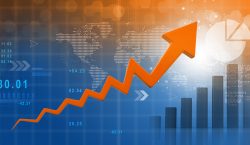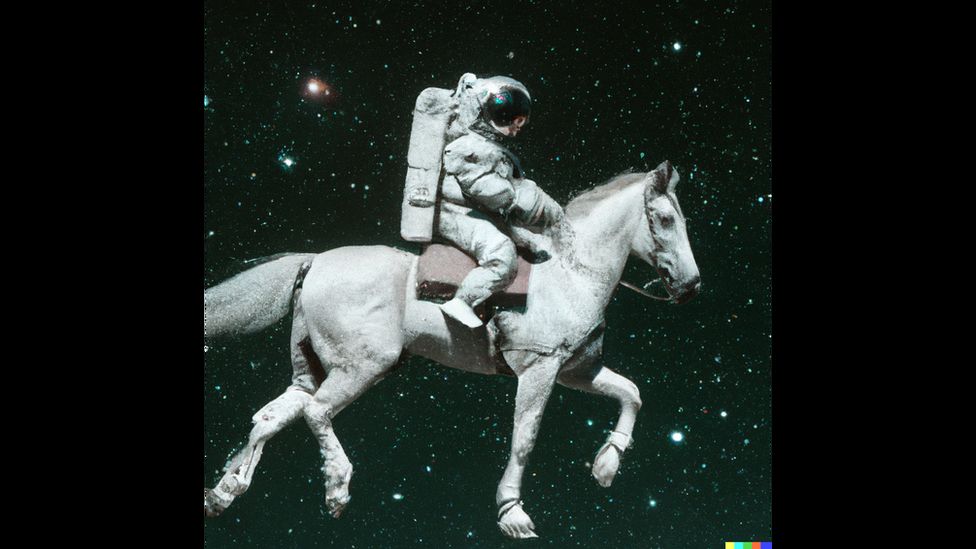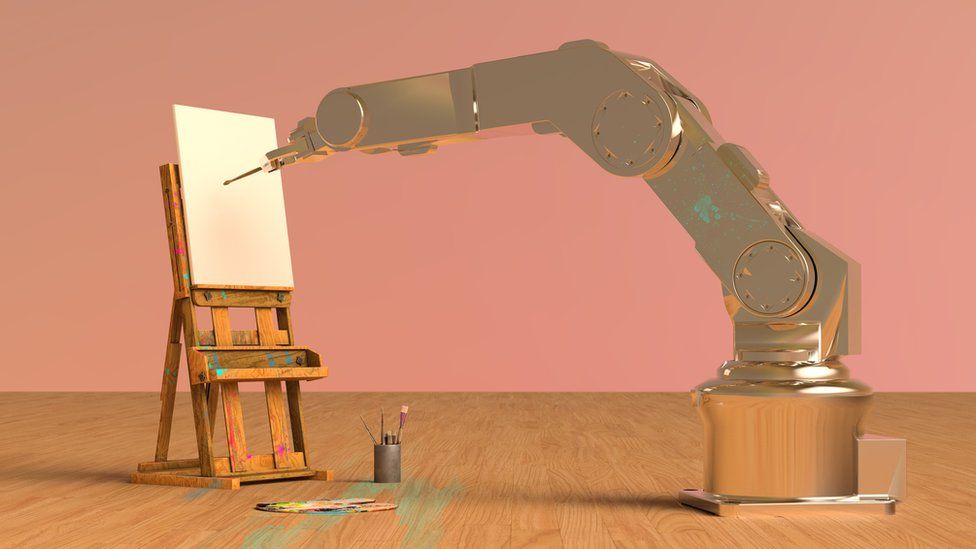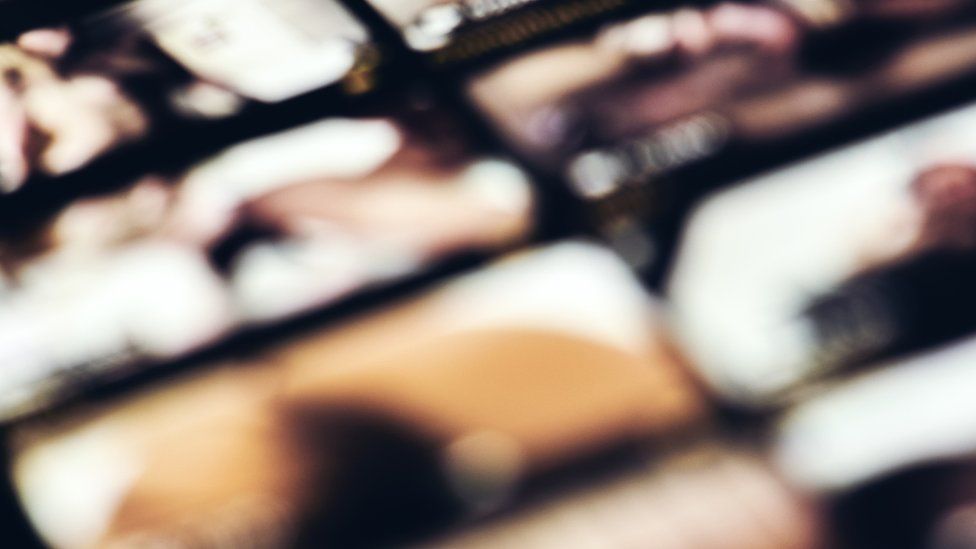

Revolutions in art are nothing new, but this one, some think, may be terminal.
“Art is dead Dude”, Jason M Allen told the New York Times.
Mr Allen is the winner of the Colorado State Art Fair’s competition in the category of “emerging digital artists”.
His winning entry “Théâtre D’opéra Spatial” was made using Midjourney, an artificial intelligence system that enables images to be created simply by inputting a few text prompts – for example “an astronaut riding a horse”.
Many artists were furious, but Mr Allen was unmoved: “It’s over. A.I. won. Humans lost”, he told the paper.
Mr Allen earned just $300 (£262) from the contest, but the news struck a tender nerve.
Some artists were already fearful that a new breed of AI image generator could take their jobs, and take a free ride on the years spent learning their craft.
“This thing wants our jobs, it’s actively anti-artist”, wrote California-based movie and game concept artist RJ Palmer in a Tweet liked more than 25,000 times.
In Twitter posts he highlighted how well the output of AI systems could imitate living artists. In one case he examined, the AI even attempted to reproduce artists’ signatures.
The output of these AI systems is impressive, but they are built upon the output of flesh-and-blood creators – their AIs are trained on millions of human-made images.
Stable Diffusion, a recently launched open-source AI image generator, learns from a compressed file of “100,000 gigabytes of images” scraped from the internet, its founder Emad Mostaque tells me.
Mr Mostaque, a computer scientist with a background in tech and finance, sees the Stable Diffusion as a “generative search engine”.
Whereas Google image searches show you pictures that already exist, Stable Diffusion shows you anything you can imagine.
“This is a Star Trek Holodeck moment” he says.

Artists have always learned from and been influenced by others – “great artists steal” as the saying goes – but Mr Palmer says of AI is not just like finding inspiration in the work of other artists: “This is directly stealing their essence in a way”.
And AI can reproduce a style in seconds: “Right now, if an artist wants to copy my style, they might spend a week trying to replicate it,” Mr Palmer tells me.
“That’s one person spending a week to create one thing. With this machine, you can produce hundreds of them a week”.
But Mr Mostaque says he’s not worried about putting artists out of work – the project is a tool like Microsoft’s spreadsheet software Excel, which – he notes – “didn’t put the accountants out of work, I still pay my accountants”.
So what is his message to young artists worried about their future career, perhaps in illustration or design? “My message to them would be, ‘illustration design jobs are very tedious’. It’s not about being artistic, you are a tool”.
He suggests they find opportunities using the new technology: “This is a sector that’s going to grow massively. Make money from this sector if you want to make money, it’ll be far more fun”.
And there are already artists using AI art for inspiration and to make money.
OpenAI say their DALL-E AI system is used by more than 3,000 artists from more than 118 countries.

There have even been graphic novels made using AI. The author of one called the tech “a collaborator that can excite and surprise you in the creative process”.
But although there is a lot of anger about the way AIs use artists’ work, experts say legal challenges may be difficult.
Professor Lionel Bently, director of the Centre for Intellectual Property and Information Law at Cambridge University, says that in the UK “it’s not an infringement of copyright, in general, to use the style of somebody else”.
Professor Bently tells me an artist would need to show that output of an AI had reproduced a significant part of their original creative expression in a particular piece of their art used to train the AI.
Even where that’s possible – not many artists will have the means to fight such legal battles.
The Design and Artists Copyright Society (DACS), which collects payments on behalf of artists for the use of their images, is worried.
I asked DACS’ head of policy Reema Selhi if artists’ livelihoods are at stake. “Absolutely yes,” she says.
DACS is not against the use of AI in art, but Ms Selhi wants artists, whose work is used by AI image systems to make money, to be rewarded fairly and have control over how their works are used.
“There are no safeguards for artists [..] to be able to identify works in databases that are being used and opt out” she adds.
Artists might be able to claim copyright infringement when an image is scraped from the internet in order to be used to train an AI – although legal experts I spoke to suggested a number of reasons why such a claim might fail.
And Ms Selhi said proposed changes to UK law would instead make it easier for AI companies to legally scrape artists’ work from the internet – something which DACS opposes.
Mr Mostaque says he understood artists’ fears and frustrations, noting that “you saw this with photography as well”.
He said the project was working with “technology industry leaders to create mechanisms by which artists can upload their portfolios and request for their styles not to be used in online services using this and similar technology”.

Google previously created an AI that could create images from text prompts. Called Imagen, it was never opened up for the public to experiment with because of the “potential risks of misuse”.
Google warned that the datasets of scraped images used to train AI’s often included pornography, reflected social stereotypes, and contained “derogatory, or otherwise harmful, associations to marginalized identity groups”.
Recently Techcrunch reported on concerns that Stable Diffusion could be used to create non-consensual pornography, so-called deepfakes and other problematic images.
Mr Mostaque says that kind of unethical use “breaks the license terms”. And he says the software already filters out attempts to create not-safe-for-work imagery, although that can be worked around by the technically savvy.
But the onus, he says, is “upon the person doing something illegal”, and other existing tools can also be abused, for example someone could use “Photoshop’s merge tool to stick someone’s head on a nude”.
Sci-fi artist Simon Stålenhag tweeted that AI art revealed, the “kind of derivative, generated goo .. our new tech lords are hoping to feed us”.
And there are some big names connected to the development of the tech. The “techno-king” himself Elon Musk is a backer of OpenAI.
Far from being “derivative goo”, they say DALL-E assists human creativity and produces “unique, original images that have never existed before”.
For a final opinion, I rang up contemporary artist and broadcaster Bob-and-Roberta-Smith (the name belongs to just one artist).
He’s had work in the big galleries, and will be staging an artistic takeover of the shop in London’s Tate Modern gallery in October.
He works in old-school physical media mainly but he thinks AI could be an interesting area of artistic activity, in the tradition of the mash-up.
But policy makers, he says, need to get the rules right, “so nobody feels ripped off”, and money isn’t just siphoned off from artists and into the pockets of big corporations. – bbc.com